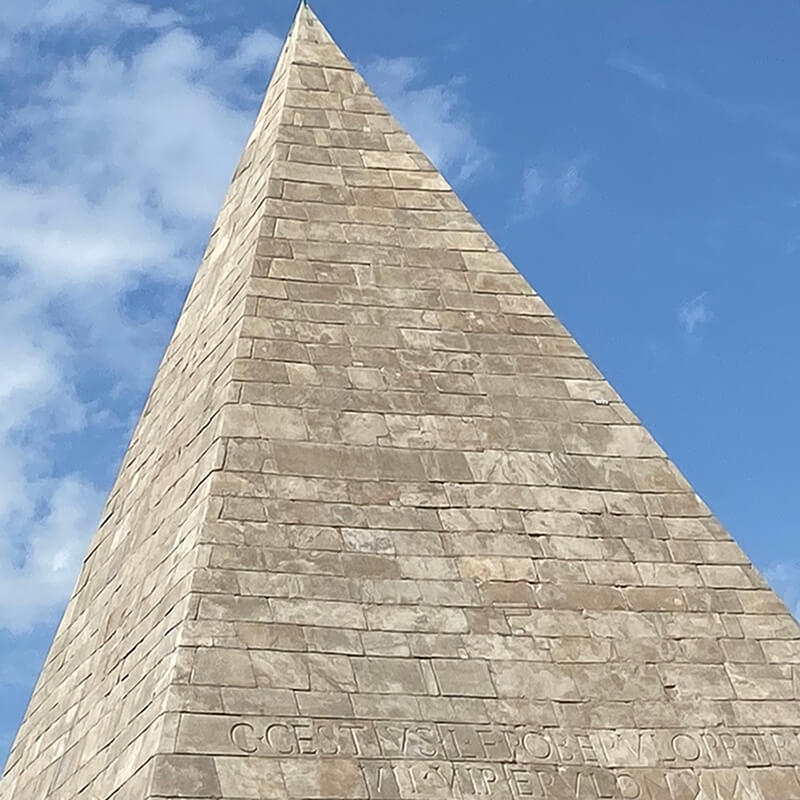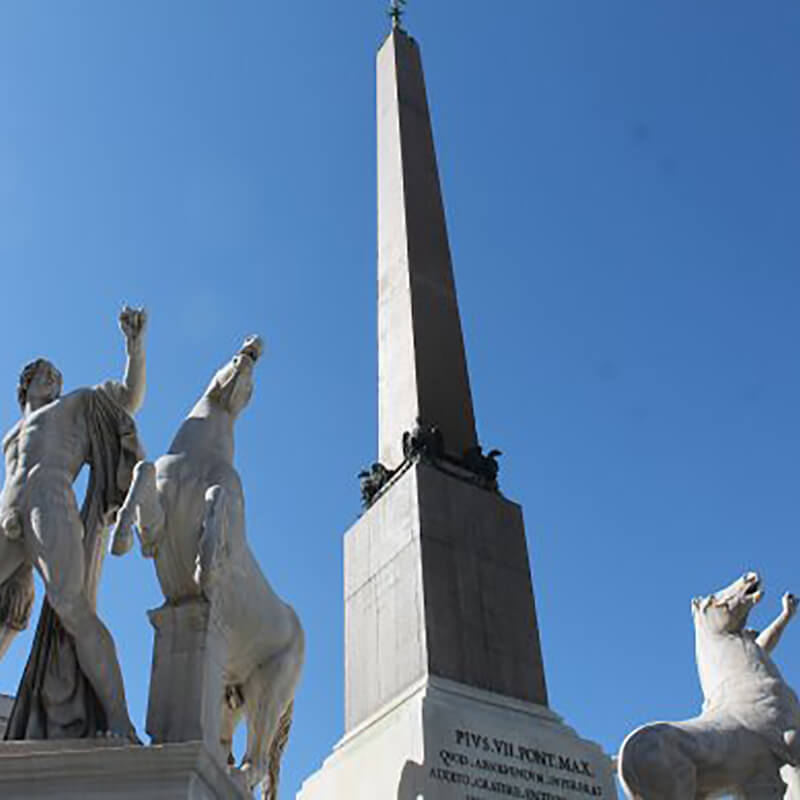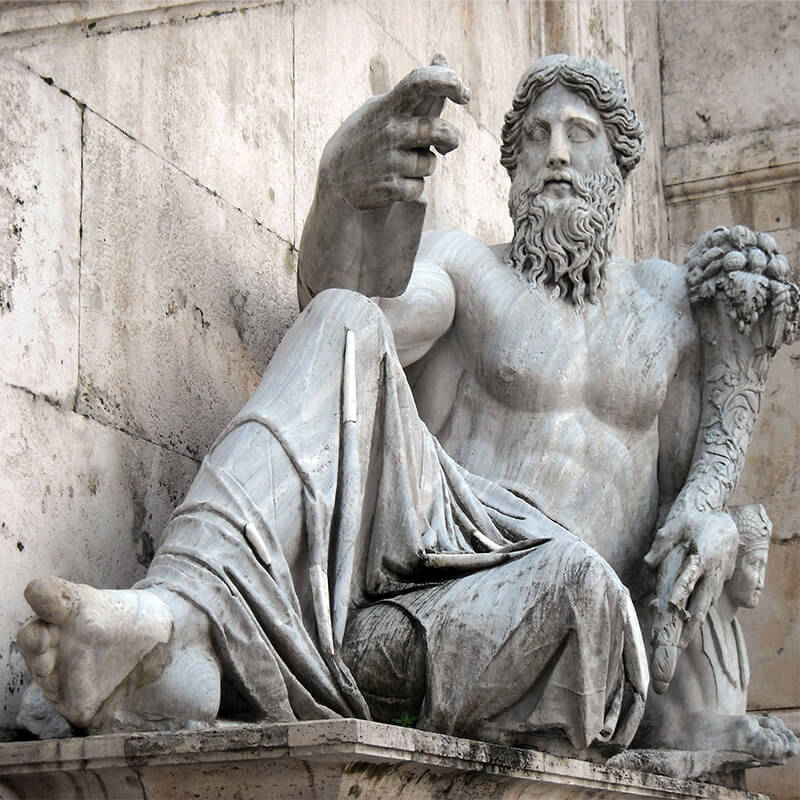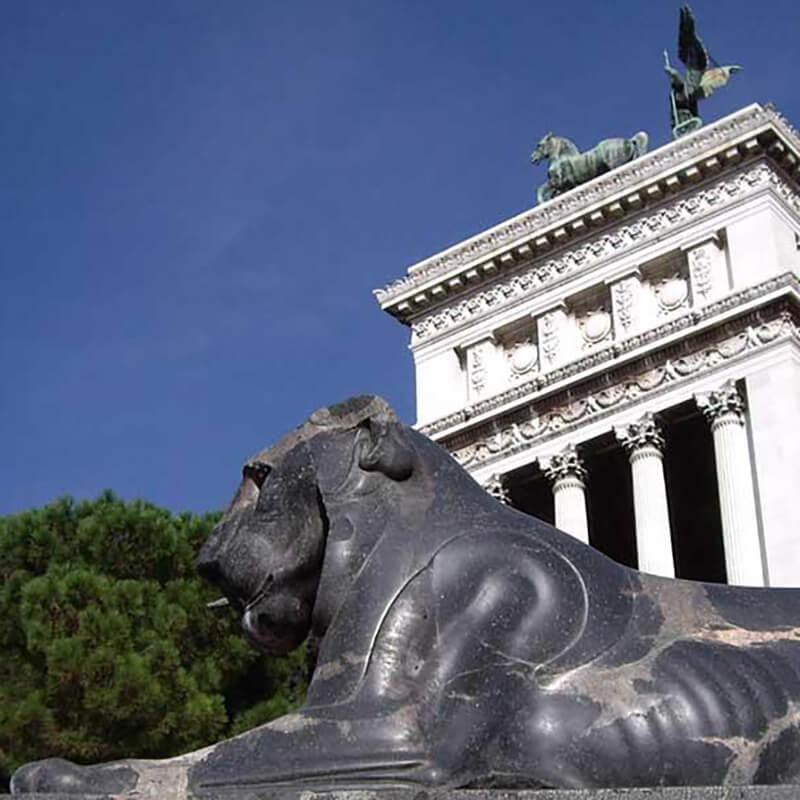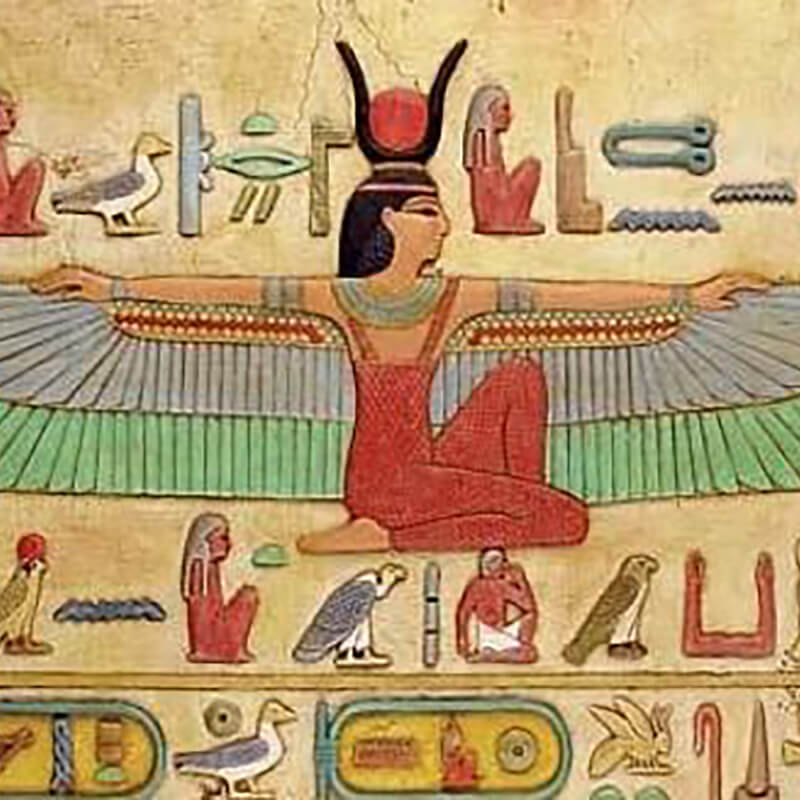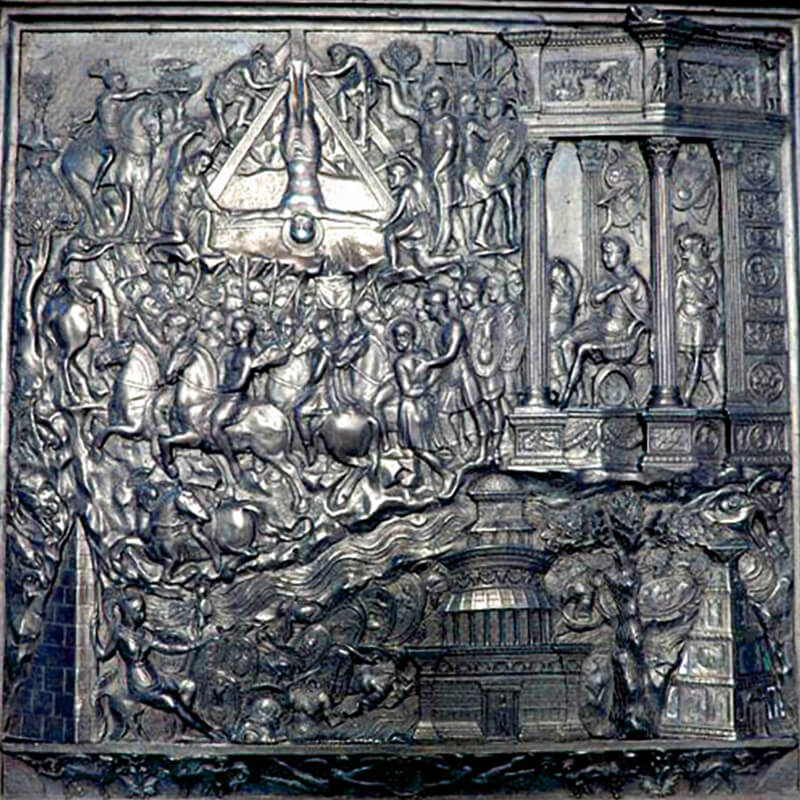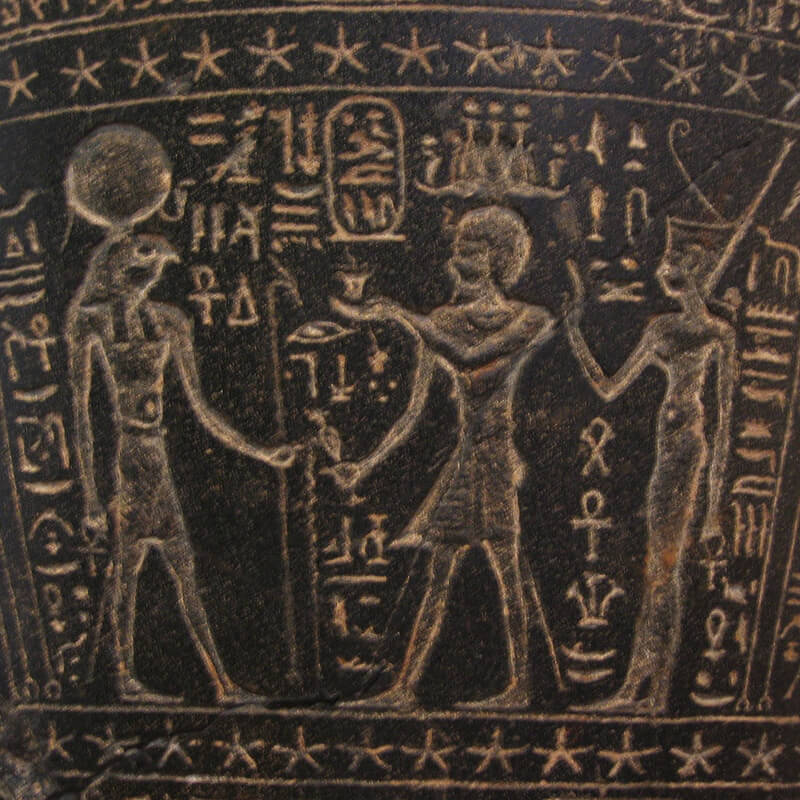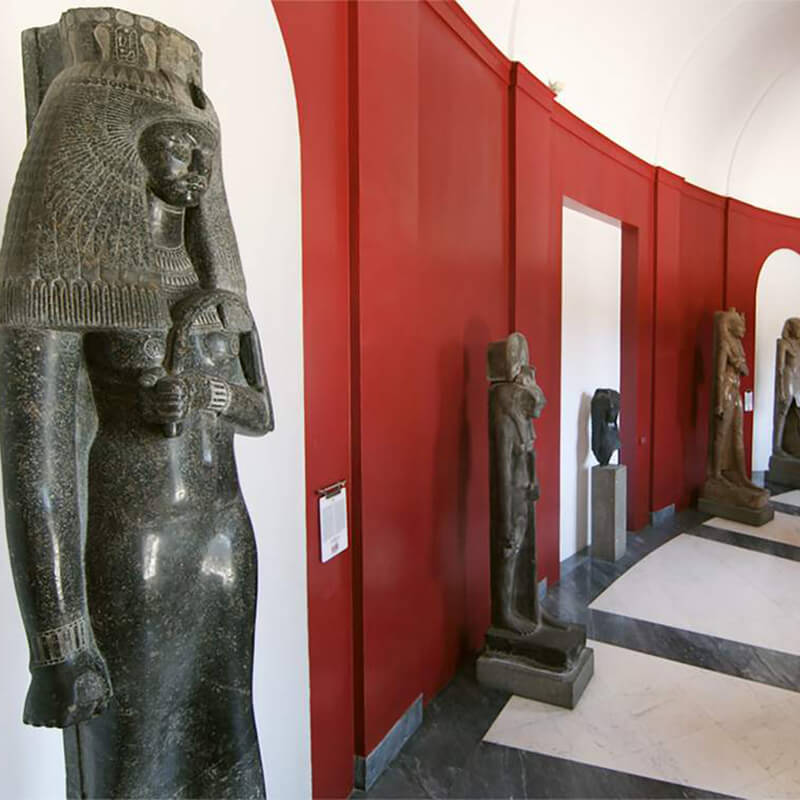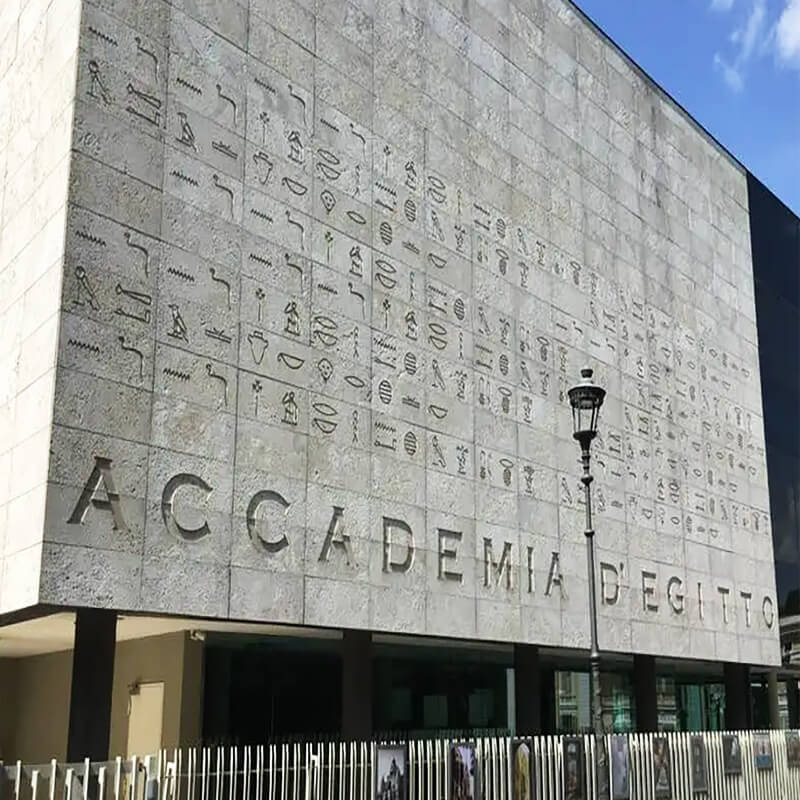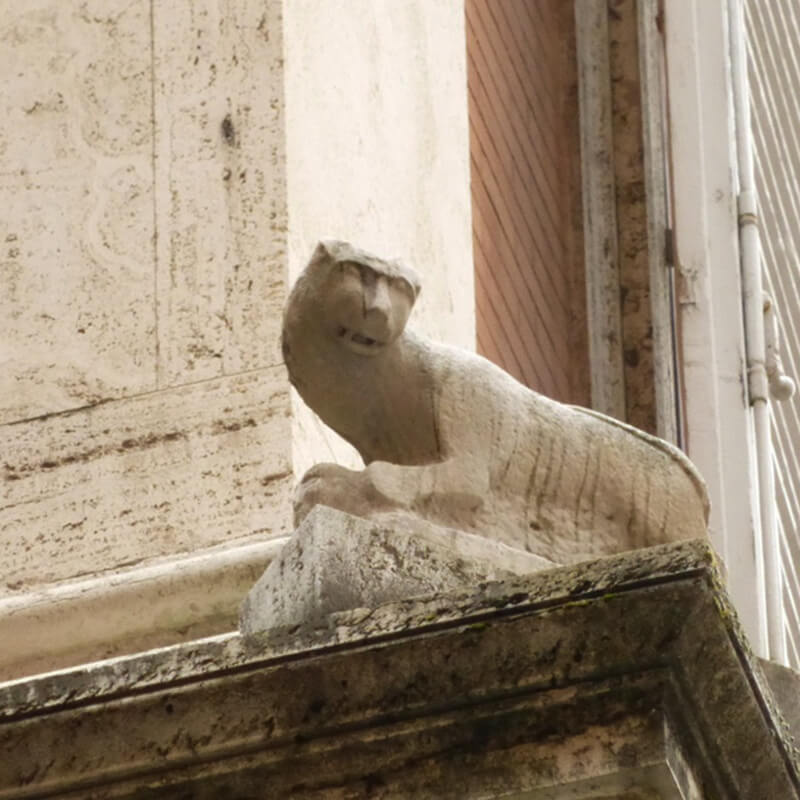If you want to discover Egypt, take a walk through the streets of Rome. Or rather, if you really want to discover Egypt, with its culture, its ancient and contemporary history, its places and its people, we suggest you go to Egypt. But if you are visiting Rome instead, know that Egypt will be a constant feature of your visit to the Eternal City.
Starting with the obelisks: Rome is the city with the largest number of Egyptian obelisks in the world. Most of the Egyptian obelisks in Rome come directly from Egypt, transported to the capital starting from the time of Augustus and the conquest of Egypt by the Roman Empire. Other Roman “Egyptian” obelisks were actually made in Rome during the time of Domitian, using granite from Egypt and copying Egyptian hieroglyphs.
In the papal Rome of Pope Sixtus V, the obelisks of Rome were raised and used as visual reference points to orient oneself in the city in the era of urban reorganizations of the capital. A curiosity: Rome is the only city in the world where it is possible to see three obelisks at once. If you position yourself at the crossroads between Via del Quirinale and Via delle Quattro Fontane you will be able to see the Quirinale obelisk, the Esquiline obelisk in Santa Maria Maggiore and the Sallustian obelisk in Trinità dei Monti, if you look in three different directions.
In addition to the three obelisks already mentioned, the other Egyptian obelisks in Rome are: the Aurelian Obelisk (at the Pincio), the Flaminio Obelisk (Piazza del Popolo), the Campense Obelisk (Montecitorio), the Macutean Obelisk (Pantheon), the Minerveo Obelisk (Piazza della Minerva), the Agonal Obelisk (Fountain of the Four Rivers in Piazza Navona), the Vatican Obelisk (Piazza San Pietro), the Matteiano Obelisk (Villa Celimonana) and the Lateran Obelisk (Piazza San Giovanni in Laterano). This last obelisk, over 32 meters high, which becomes 45.70 meters with the base and the cross placed on top, is the tallest monolithic ancient Egyptian obelisk in the world.
In Rome you will also find an Egyptian pyramid, the Piramide Cestia, in Porta San Paolo, right in front of the metro and train stations Piramide/Ostiense. Piramide Cestia (Pyramid of Cestius) was built in 12 BC. by will of the wealthy tribune Gaius Cestius Epulone, who bound his heirs to build it within a year, under penalty of losing their inheritance. Made of Carrara marble, the pyramid contains a burial chamber decorated with Pompeian-style frescoes, and was subsequently incorporated into the Aurelian Walls between 272 and 279. The Cestia Pyramid was recently completely renovated in 2017 thanks to the intervention of the Japanese philanthropist Yuzo Yagi, who financed the restoration which costed two million euros.
While the Pyramid of Cestius is the only pyramid remaining in Rome, the Eternal City has hosted various other pyramids, all built by wealthy clients passionate about exotic Egypt. These pyramids have disappeared today, but in reality they live again in other constructions, having been “recycled“. For example, in Via del Corso, at the height of the Church of Santa Maria dei Miracoli, there stood a marble pyramid, dismantled in 1675 by Alexander VII to build the church by reusing the materials from the pyramid, which were also used for the construction of the Church of Santa Maria del Popolo not far away.
Another pyramid-shaped Roman era tomb, the Meta Romulis (Romulus’ Meta), was built where Via della Conciliazione stands today. Although it was demolished in 1499 by Alexander VI, historical evidence remains in various paintings and frescoes in the Vatican Museums, including in the frescoes of the Hall of Constantine, and in the Crucifixion of Peter in the Stefaneschi Polyptych painted by Giotto. The Meta Romulis, together with another structure depicted in the shape of a pyramid but actually with a conical plan, the Terebinthus (also known as Obeliscus Neronis), are depicted in a decorative bas-relief of one of the doors of St. Peter’s Basilica. The scene of the bas-relief represents the crucifixion of Saint Peter, whose exact location is described as “halfway between the two metae“, therefore in the central position of St. Peter’s Square, where the Vatican Obelisk stands today.
Several temples and shrines dedicated to Egyptian deities were built in Rome, although few traces remain today. In Piazza Iside, near Colle Oppio and the Colosseum, where remains of the ancient temple dedicated to the goddess Isis, wife of the god Osiris and mother of the god Horus, are still visible. Isis was worshipped as divinity of motherhood, of fertility and magic, and was highly venerated also in Rome, especially by women.
The Temple of Isis and Serapis in Campo Marzio, near the Pantheon, was however the important place of worship dedicated to the Egyptian goddess, whose remains are buried under the Palazzo del Seminario, the Church of Santa Maria sopra Minerva and the Church of Santo Stefano del Cacco, whose name is due to a statuette of the Egyptian god Thoth, represented in the form of a macaque.
Another place of worship dedicated to the Greek-Egyptian divinity Serapis, Lord of the Universe, god of the underworld, fertility, healing and the Sun, was located at the Quirinale, and some remains are today buried under the Gregorian University in Piazza della Pilotta and under Palazzo Colonna.
Various sculptures and artefacts from ancient Egypt are collected and visible at the Gregorian Egyptian Museum, part of the Vatican Museums, which dedicates 9 rooms to a rich collection of works and artefacts brought from Egypt in Roman times to decorate buildings and villas, including Hadrian’s Villa in Tivoli. Also visible in the Gregorian Egyptian Museum are the two lions from the 4th century BC. used first by the Pantheon and then by the Acqua Felice Fountain in Via XX Settembre.
Speaking of Egyptian lions, the basalt lions today positioned at the foot of the Capitoline Hill are also original Egyptians, which were primarily part of the Temple of Isis in Campo Marzio and subsequently placed at the entrance to the Church of Santo Stefano del Cacco, until they were moved to the Capitoline Hill, in 1562, by will of Pius IV.
In Via del Piè di Marmo in the center of Rome there is an enormous marble foot, perhaps part of a gigantic monument dedicated to an unknown Egyptian deity but which could be Isis, given the proximity of the Temple of Isis and Serapis in the area. The same Temple of Isis and Serapis in Campo Marzio is also the site of the first installation of several obelisks (those in Piazza Navona, Piazza della Rotonda, Piazza della Minerva and Piazza dei Cinquecento), but also of the discovery of a small marble cat, which should represent the cat goddess Bastet, and which today is positioned semi-hidden on a cornice of Palazzo Grazioli in Via della Gatta.
Various Egyptian statues are visible in Rome, starting from the statue known as Madama Lucrezia in Piazza San Marco, which actually depicts the goddess Isis or one of her priestess, or like the Statue of the Nile in the Campidoglio, where we also find a collection of precious pieces from Egypt in the Egyptian room of the Capitoline Museums. Among the museums that preserve Egyptian treasures, do not forget the Barracco Museum, a small museum between Piazza Navona and Campo de’ Fiori, which dedicates the first two rooms of the museum to a collection of sculptures and works of art from ancient Egypt.
And above all, do not miss the Egyptian Academy in the heart of Villa Borghese. The Egyptian Academy in Rome was established in 1965 by the Egyptian Ministry of Culture, and is the only Egyptian academy in the world (outside Egypt). The Egyptian government had actually been present in Rome since 1930 with the establishment of a cultural headquarters inside Colle Oppio Park, where it is possible to admire the sculptures and bas-reliefs of the internal garden, also visible from outside the cultural center.
The Egyptian Academy at Villa Borghese, in addition to various cultural events and exhibitions, a theater and a library, hosts the Egyptian Museum, which displays the permanent exhibition dedicated to the discovery of Tutankhamun’s Tomb and various sculptures and works of art, both ancient and modern, exhibited in the internal spaces and gardens of the academy. A curiosity: the architecture and external decorations of the Egyptian Academy in Rome are inspired by the Library of Alexandria in Egypt.
Do you want to explore some of these places with me on a tour or guided visit to Rome in search of ancient Egypt, and its interactions with ancient and modern Rome? Get in touch for info and reservations, and continue to follow us on Facebook, Instagram and on our blog to learn more about the places, the people and the stories of the Eternal City.

